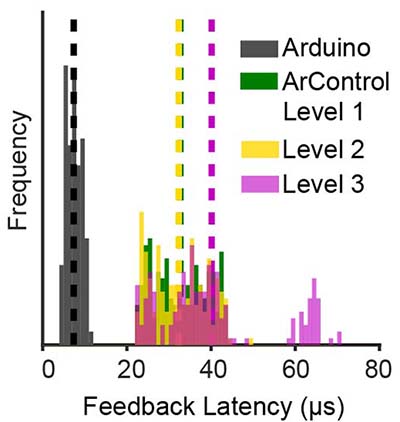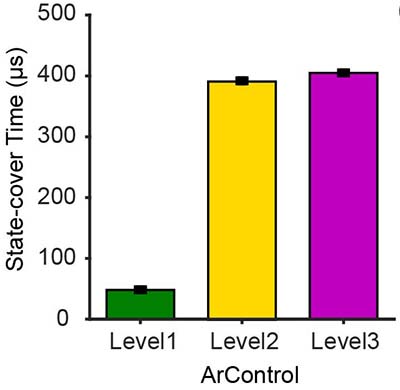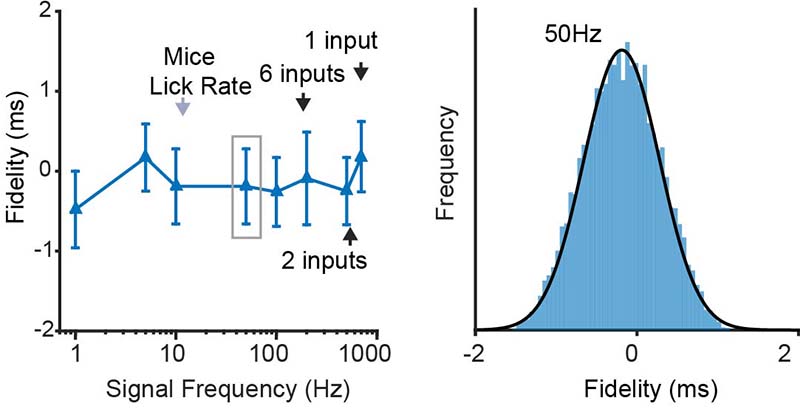-
Notifications
You must be signed in to change notification settings - Fork 5
Technique_Verify
Platforms require high performance that allows them to accurately master input responses and output stimuluses. Both the time accuracy and the DAQ ability were tested on the ArControl. The results demonstrated that the ArControl had the temporal resolution of less than 1 ms and could accurately record up to 200 Hz input signals.
The feedback latency represents the time that it takes to detect an input signal and then to emit the feedback output signal. To measure this, a Session that consisted of two States was constructed. State-1 configured a transition to State-2 when detecting an input signal (e.g., IN1 for HIGH). State-2 then turned on an output (e.g., OUT1 for HIGH). The lag between the onset of IN1 and OUT1 denoted the feedback latency.

The State Notation programming was powerful and flexible, however, the State structure itself was time-consuming. Even an empty State took a certain time, which was referred to as the State-cover time. We constructed a null State-1 with an immediate transition to State-2. The State-cover time was calculated via subtracting the start time between State-1 and State-2.

The ArControl had an inbuilt DI/DO/State-Transition recorder module at Level 3, which could be considered the light DAQ. The results proved that the ArControl could record 200 Hz TTL signals from all 6 input channels simultaneously, and reaching up to 700 Hz when focusing on a single channel. The recording accuracy was ±1 ms (95% confidence, round effect).